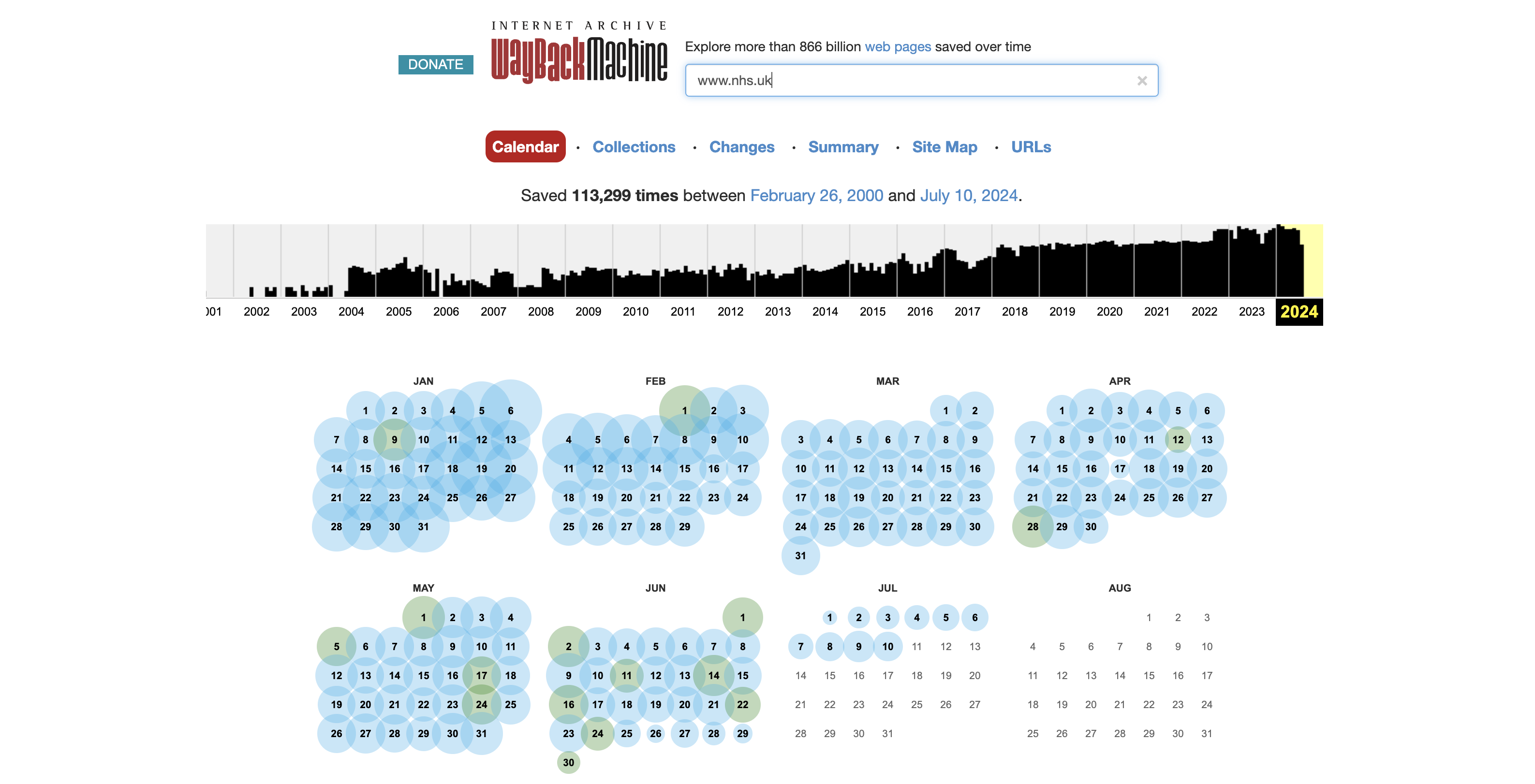
There are so many tools out there for digital PRs, and it can seem like a bit of a minefield in deciding which tools to invest in.
Well, I’ve done the hard work for you and listed the 60 (paid for and free) tools we use at Digitaloft.
I’ve split them into the following categories:
💡 Ideation
🔢 Data collection
🔗 Outreach
📊 Reporting
💌 Newsletters
Ideation Tools & Resources

Many people often find ideation to be the hardest part of digital PR, and it always seems to be the first thing to fall to the bottom of to-do lists. However, ideation is one of the most important (if not the most important) factors.
Setting time aside to research and ideate for your clients is crucial. All elements of your digital PR strategy could be perfect, but if your story (idea) isn’t spot on, you will often struggle to land coverage.
I know it can be hard to come up with new ideas, as there is so much competition. That’s why I’ve outlined some of my favourite tools and websites for beating creative block and sparking innovative ideas!
1. Exploding Topics [FREE] – I love Exploding Topics for spotting trending topics before anyone else! It’s amazing for ideation, and also for spotting reactive opportunities for your clients! I am signed up to the weekly newsletter, which outlines the potentially viral Google search trends from that week! I only use the free version but there is a paid for version too.
2. Google Trends [FREE] – With Google Trends, you can see the popularity of search terms, which is great for reactives but also for finding the ‘why now’ when pitching out your stories. You can also look at search terms on a global scale or split it by country.
3. Glimpse [FREE] – Glimpse is another great way to spot trends before they are trending! You can identify trends in different categories, which can help with ideation! You can also get accurate search volume which can give you another edge to stories you are pitching.
4. AnswerThePublic [FREE] – AnswerThePublic is a keyword research tool that is great for brainstorming and sparking innovative ideas. You can easily find out what people are interested in on a certain topic. You simply enter a word or couple of words, e.g., “sleep,” and the tool shows you the types of questions people are asking. I have a free account, and you get 3 daily searches.
5. ChatGPT [FREE] – So while I don’t recommend ChatGPT for writing copy or pitches, I do recommend it for inspiration and ideation! ChatGPT can be a great tool to use when you feel like you’ve hit a hall with ideas.

6. Information Is Beautiful [FREE] – Founded by David McCandless (who spoke at our Digital PR Summit in April), Information is Beautiful is a website dedicated to making sense of the world with graphics and data visuals. It’s an amazing source of inspiration.
7. Data Viz Project [FREE] – Similarly to Information is Beautiful, Data Viz Porject Is a collection of data visualisations which provide inspiration for telling stories with data.
8. The Pudding [FREE] – The Pudding is a digital publication which is another great source of inspiration, as they launch creative campaigns with compelling visual assets. One of their recent pieces reveals how your city will feel in the future.
9. Neomam Jealousy List [FREE] – Every year Neomam collate their ‘Jealousy List’ which is a list of projects and campaigns they wish were theirs! It’s a great source of inspiration and you can look at previous editions of the list here: 2020, 2021 and 2022.
10. Reddit [FREE] – Reddit is a great source for ideation, topic research, spotting trends and much more! You can use Reddit as a research tool by looking at different subreddits. Subreddits are forums where people discuss different topics – and you can often find lots of insight here!
11. The PR Insider [FREE] – A relatively new resource to the digital PR block, The PR Insider is quickly becoming one of the most popular PR resources! You can browse expert interviews, an up to date marketing and awareness dates calendar, PR insights and thousands of PR campaigns!
12. Digital PR Examples [FREE] – This is a Twitter (X) account which regularly shares the best work from the industry, as well as tips and must reads. It’s a great source of inspiration for when you’re doing ideation!
13. Famous Campaigns [FREE] – Another amazing source of inspiration is Famous Campaigns. This blog shares the best PR and marketing stunts and campaigns – I love this site as it isn’t just focused on digital PR, it shares the best creative brand campaigns and I think digital PRs can learn a lot from the wider PR industry, as well as creative and brand teams.
14. Days of the Year Calendar [FREE] – This days of the year calendar from 10yetis is a must for anyone working in PR! You can enter your email to get a printable version or I love the digital version, as you can also filter this by category so it only shows the days which are relevant to your clients.
Data Collection Tools & Resources

Reliable and accurate data is paramount for your digital PR ideas. There are so many different datasets we use at Digitaloft and I would be here all day if I listed them below. However, I’ve summarised our most used tools and websites for data collection below.
15. Google Dataset Search [FREE] – This tool helps you find reliable online data sets. You can filter by date, usage rights, download format, and whether the data set is free.
16. Office for National Statistics [FREE] – ONS is the Office for National Statistics in the UK and it’s the largest independent provider of statistics. You can find reliable data on things such as business, the economy, society, employment, education, housing, the population, and so much more.
17. U.S. Bureau of Labor Statistics [FREE] – This website is really good for official US data, and you can find data on all sorts of topics including inflation & prices, employment (& unemployment), workplace injuries and so much more.
18. WhatDoTheyKnow [FREE] – Browse and make Freedom of Information requests on WhatDoTheyKnow. You can ask questions from the government and public sectors (e.g. councils, NHS, police forces), and by law, they have to respond. Submitting FOI requests is an amazing way to get unique data. Some of our most successful digital PR campaigns have come from uncovering stories through FOIs.

19. TikTok [FREE] – No, TikTok isn’t just for Gen Z! TikTok is an amazing app for spotting and identifying emerging trends, which helps you land coverage for your clients! You can also utilise TikTok data (e.g. views) for your digital PR campaigns.
20. Pinterest [FREE] – Pinterest campaigns have proved really popular in digital PR and it’s a great source for data.
21. Instagram [FREE] – All of the social media platforms can be used for data collection and Instagram is no different. If you’ve been in digital PR for a few years, you will remember when the “most Instagrammed” campaigns were all the rage! Instagram is amazing for inspiration for campaigns and reactives – and you can utilise the data too!
22. Facebook [FREE] – I love Facebook for finding case studies and joining different Facebook groups – one of my best performing reactive pieces was because I saw mums posting about my client on a Facebook page and I pitched this out to press (as we know they love anything with parents approval).
23. Statista [FREE OR PAID FOR] – Statista has insights and data across 170 industries and 150+ countries. Some of the data is behind a paywall, and you do need a premium account to access them!
24. Wayback Machine [FREE] – The Internet Archive Wayback Machine lets you look at different websites over time to see how they have changed. For example, if you look below, I entered the NHS website, and you can see that it was saved 112,207 times between February 2000 and June 2024. You can also click on different days to find out what changed. This is a really good tool for looking at historical price data.

25. YouGov [FREE] – YouGov is an international online research data and analytics technology group. They have lots of freely accessible public data on their site, including survey results and popularity rankings. They have data on numerous topics, including travel & transport, economy & business and health & science. You can also carry out your own surveys through YouGov.
26. Tripadvisor [FREE] – Tripadvisor is a great source for campaigns, especially if you’re creating an index campaign and looking at different factors. You can get data on things such as the number of hotels, restaurants and things to do.
27. DVLA [FREE] – The DVLA has a wealth of vehicle data from the UK. For example, you can get car driving test data by test centre to reveal the areas where it’s easiest to pass your driving test.
28. IMDb [FREE] – IMDb is the world’s most popular and authoritative source for movie and TV content. You can find ratings and reviews for films and series on here which you can use in your campaigns.
29. OECD [FREE] – The Organisation for Economic Co-Operation and Development (OECD) is an international organisation that works to build better policies for better lives. OECD is made up of 38 countries and was founded in 1961. The website has a wealth of data from OECD countries including data on health, agriculture and the environment.
30. Met Office [FREE] – Looking for historical weather data for your campaign? The Met Office has historical data dating back over 100 years.
Outreach Tools & Resources

Outreach is the cornerstone of any digital PR strategy. There are lots of tools and websites out there which can streamline your outreach efforts and really maximise your results.
31. Buzzstream [PAID FOR] – Buzzstream is an outreach CRM and one of the best tools out there for digital PRs. We use Buzzstream for email scheduling including A/B testing of headlines and tailored pitching. The platform is also great for researching prospects and gives you amazing insights on your outreach including open rates.
32. Responsesource [PAID FOR] – ResponseSource connects you to journalists to help them with stories they are working on. Journalist opportunities land straight in your inbox every day, you provide them with the data/comment/case study that they are looking for and then you watch the links roll in. ResponseSource is our go-to tool for journalist requests in the UK. I also love ResponseSource as it give you insight into what topics journalists are interested in right now.

33. Qwoted [PAID FOR / FREE] – Very similar to ResponseSource, Qwoted also connects you with journalists who need help writing their articles. Qwoted is especially good for journalist requests in the US. Qwoted offer a free version (limited number of requests you can respond to), as well as a paid for version (unlimited requests).
34. #journorequest and #prrequest [FREE] – these two hashtags on Twitter (or X) are the free way of spotting journalist requests. Journalists use the hashtag #journorequest when they are looking for help on articles they are writing and PRs can use the #prrequest when they are looking for case studies.

35. Media databases – we use Roxhill and Anewstip [PAID FOR] – Media databases are a vital tool for digital PRs, as they provide the contact details for journalists you want to send your stories too. Roxhill is really good for UK contacts, and we use Anewstip to complement Roxhill, as Anewstip is great for global contacts.
36. Twitter (X) [FREE] – Twitter is an amazing resource if you work in digital PR. It’s really good for finding journalists emails, as they will often have them in their bio, or you can search “@[username] .com” or “@[username] email” to try and find their email address. Digital PRs and journalists are all very active on Twitter so it’s also good for campaign inspiration and for keeping up to date with the latest industry news. It’s also great for finding social media coverage too!
37. Similar Sites [FREE] – Similar Sites is amazing for finding alternative sites when building media lists. You enter the site that you would like to secure coverage on, and the tool automatically find similar sites for you to add to your media list. It also has a Chrome extension too!
38. Hunter [FREE] – the Hunter Google Chrome extension helps you find email addresses for contacts which aren’t on a media database. There is nothing more annoying than finding the perfect journalist for your campaign but then you can’t find their email address anywhere! Hunter helps you find their email address! With the free version you can 300 yearly searches.
39. RocketReach [PAID FOR] – is similar to Hunter and helps you find email addresses for journalists that aren’t listed anywhere else.
40. The OG Percentage Calculator [FREE] – I’ve used this since my first day in PR! From crafting that perfect pitch and including percentages, to working out results and reporting – this is definitely one of my most used tools as a digital PR. You can also use the JBH one too as this calculator helps you word your percentages in a more attention grabbing way!
41. Grammarly [FREE OR PAID FOR] – Grammarly is a must for anyone writing or producing copy to ensure that their writing is error-free and grammatically correct. Just ensure it’s set to the correct language, as it automatically defaults to American English.
42. Natural Readers [FREE] – this text to speech tool is really handy for also spotting errors in your writing. We’ve all been there when we’ve read our piece of work countless times and it can be easy to miss little mistakes. This tool helps you spot when things have been worded unnaturally, if there are any mistakes or too many long sentences!
Reporting Tools & Resources

Next up is reporting! Another really important aspect of digital PR, as we need to ensure we are showing the value of our work – beyond just ‘link numbers’. Below I’ve listed the different tools we use for reporting on our digital PR activity.
43. Google Alerts [FREE] – Google Alerts is a great free tool where you can set up alerts for your clients to help you track coverage and links. You receive emails with coverage straight to your inbox too!

44. Talkwalker Alerts [FREE] – You shouldn’t just rely on one tool for coverage tracking and another one I love is Talkwalker Alerts. This works in a very similar way to Google Alerts and you can set up monitoring for brand names, competitors and keywords. I often find that Talkwalker Alerts finds links and coverage which I can’t find through Google News & Google Alerts.
45. Ahrefs [PAID FOR] – Ahrefs is another tool which we use for coverage tracking, to ensure we have found all of the backlinks for our campaigns and reactives. Ahrefs is also amazing for analysing top-performing content, checking keyword rankings, competitor analysis, and so much more!
46. CoverageBook [PAID FOR] – I love CoverageBook as it makes beautifully designed reports! You just paste in links to articles and social media posts to CoverageBook and it creates a customisable report.
47. Moz [FREE & PAID FOR] – The main thing I use Moz for is checking if a link is follow or nofollow. Moz has many other features as well, including domain analysis, keyword explorer, and link explorer. The Moz bar is really useful for checking SEO metrics when you are browsing the web. For example, you can easily see a website’s DA in the extensions bar.
48.Inspect Canonical [FREE] – This Google Chrome extension means you can easily check the canonical tag of a page. It means you don’t have to comb through the source code and instead the extension displays either GREEN (self canonical), AMBER (canoncalised) or RED (error).
49. Buzzsumo [PAID FOR] – for social monitoring and also coverage tracking. Buzzsumo is also good for ideation as you can find the articles which are being shared the most
50. Semrush [PAID FOR] – We use Semrush for monitoring rankings, conducting keyword research and competitor analysis.
51. Google Search Console [FREE] – Google Search Console helps you monitor and maintain your site in Google Search results. It’s great for looking into keyword popularity and uncovering technical SEO issues.
52. Google Analytics 4 [FREE] – Data such as organic traffic from third party platforms such as Ahrefs and Semrush are all estimates, so it’s really important to ask your client’s for access to GA4 so you can view the exact website data.
53. Looker Studio [FREE] – Looker Studio, previously known as Data Studio is amazing for building customised dashboards and reports for your clients. All of our clients at Digitaloft have access to a personalised Looker Studio.
Digital PR Newsletters

Last but not least, I’ve listed some of my favourite free industry newsletters that you should sign up for to help you keep up to date with industry news, insights and campaigns!
54. The PR Insider – The PR Insider newsletter arrives in your inbox every Friday and includes over 60 PR campaigns from the previous week, showcases the top 10 topics journalists are talking about in national publications, as well as insight from a PR expert.
55. The Grapevine Newsletter – The Grapevine newsletter is a monthly creative newsletter that shares 100s of PR campaigns. The newsletter is a great source of inspiration for different niches, you can explore new formats and methodologies and you can also get insight into seasonal events too!
56. The Digital PR Newsletter – This newsletter shares weekly PR tips straight into your inbox. Recent editions of the newsletter have shared how to find a Forbes journalist’s email and how to turn BBC mentions into links!
57. Exploding Topics Newsletter – Sign up the the Exploding Topics newsletter to uncover topics before they take off!
58. The Pudding Newsletter – As I mentioned earlier The Pudding is a great source of inspiration and shares amazing data visulations. You can sign up to their newsletter to get their latest projects sent to you.
59. Famous Campaigns Newsletter – Every Friday this newsletter lands in your inbox with the latest creative brand campaigns!
60. Sign up for newsletters of relevant publications for your clients. For example, you can sign up for the House Beautiful newsletter for homes, interiors, and gardens clients or the TimeOut newsletter for travel clients. Most publications have a newsletter, and it’s a great way of staying up to date on news in your clients’ industries.



